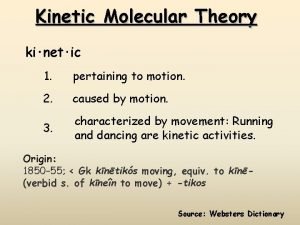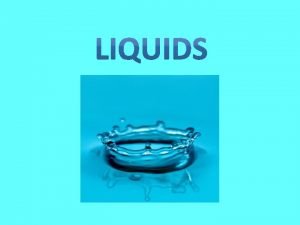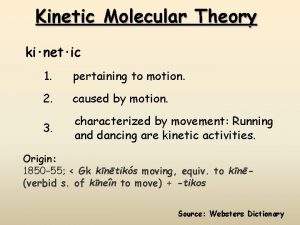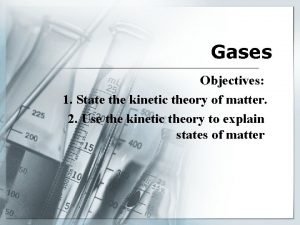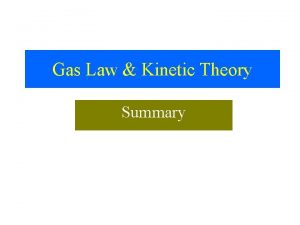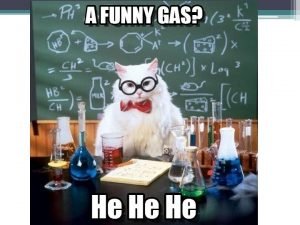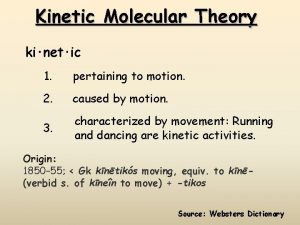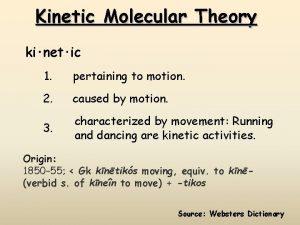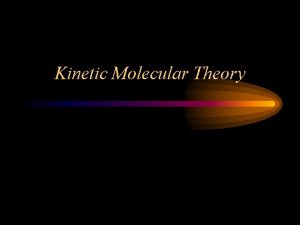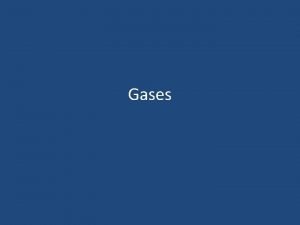Kinetic Molecular Theory kinetic 1 pertaining to motion









- Slides: 9

Kinetic Molecular Theory ki⋅net⋅ic 1. pertaining to motion. 2. caused by motion. 3. characterized by movement: Running and dancing are kinetic activities. Origin: 1850– 55; < Gk kīnētikós moving, equiv. to kīnē(verbid s. of kīneîn to move) + -tikos Source: Websters Dictionary

The Nature of Gases q Gases expand to fill their containers q Gases are fluid – they flow q Gases have low density q 1/1000 the density of the equivalent liquid or solid q Gases are compressible q Gases effuse and diffuse

Kinetic Molecular Theory q Particles of matter are ALWAYS in motion q Volume of individual particles is zero. q Collisions of particles with container walls cause the pressure exerted by gas. q Particles exert no forces on each other. q Average kinetic energy is proportional to Kelvin temperature of a gas.

Kinetic Energy of Gas Particles At the same conditions of temperature, all gases have the same average kinetic energy. m = mass v = velocity At the same temperature, small molecules move FASTER than large molecules

The Meaning of Temperature q Kelvin temperature is an index of the random motions of gas particles (higher T means greater motion. )

Diffusion q Diffusion describes the mixing of gases. The rate of diffusion is the rate of gas mixing. q Diffusion is the result of random movement of gas molecules q The rate of diffusion increases with temperature q Small molecules diffuse faster than large molecules

Effusion: describes the passage of gas into an evacuated chamber.

Graham’s Law of Effusion M 1 = Molar Mass of gas 1 M 2 = Molar Mass of gas 2

Purification of Uranium-235 Using Gaseous Diffusion
 Chapter 14 solids liquids and gases
Chapter 14 solids liquids and gases Kinetic molecular model of gases
Kinetic molecular model of gases Kinetic molecular theory volume
Kinetic molecular theory volume Kinetic molecular theory of liquids and solids
Kinetic molecular theory of liquids and solids Kinetic molecular theory of liquids
Kinetic molecular theory of liquids Postulates of kinetic molecular theory
Postulates of kinetic molecular theory Kinetic theory def
Kinetic theory def Theory vs hypothesis
Theory vs hypothesis Charles law in terms of kinetic molecular theory
Charles law in terms of kinetic molecular theory Postulates of kinetic theory of gases class 11
Postulates of kinetic theory of gases class 11


